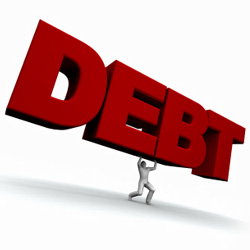
Apologies but missed this yesterday. The Standard and Poors reply to the Budget was exactly as forecast here at MB:
Bulletin: Economic And Political Risks Could Undermine Australia Budget’s Fiscal Consolidation Strategy
MELBOURNE (Standard & Poor’s) May 9, 2012–Standard & Poor’s Ratings Services said that the Labor government’s proposed 2013 budget will have no immediate effect on its ratings on the Commonwealth of Australia (unsolicited rating AAA/Stable/A-1+).“The federal government’s budget strategy is to stabilize its fiscal position during the fiscal year ending June 30, 2013, following four successive years of deficits and a rising debt burden,” said Standard & Poor’s credit analyst Kyran Curry. “Restoring the government’s strong fiscal settings through a forecast return to surpluses over the cycle and maintaining low debt will provide flexibility to respond to large economic and financial shocks, and is consistent with maintaining the ‘AAA’ rating on Australia. However, this strategy relies on an accommodative economic outlook that remains highly uncertain and the support of coalition partners for the minority government’s austerity measures.”
The federal budget foresees a deficit on a cash basis of A$44.4 billion (-3.0% of GDP) in fiscal year 2012 (ending June 30, 2012) and a small surplus of A$1.5 billion (0.1% of GDP) in fiscal 2013. The surplus would be achieved through cuts to defense spending, slower growth in overseas aid, not proceeding with a company tax cut, and tax concessions for high-income earners that would offset assistance to families, spending on care for the elderly and disabled, loss carrybacks for companies, and higher spending on infrastructure. The deficit that the government expects in fiscal 2012 is modestly smaller than in fiscal 2011, notwithstanding a likely further decline in receipts of about A$5.7 billion stemming from the direct and indirect effects of weaker economic activity.
The budget matches our previous expectation of the federal balance returning to a small surplus in fiscal 2013 (for more information, please see the full analysis “Commonwealth of Australia,” published Oct. 18, 2011, on RatingsDirect on the Global Credit Portal). Our estimate incorporates the government’s new tax on carbon pollution that is due to go into effect in July 2012. We expect the new tax and related measures to be broadly neutral to the projected fiscal balance. The government now expects gross general government debt to peak at about 18.6% of GDP in 2011-2012, remaining well below that of most peers. The unsolicited ‘AAA’ long-term and ‘A-1+’ short-term sovereign credit ratings on Australia reflect Standard & Poor’s opinion of the country’s strong ability to absorb large economic and financial shocks, such as the global recession in 2009. Our view is supported by Australia’s ample fiscal and monetary policy flexibility, economic resilience, public policy stability, and sound financial sector. These strengths are moderated by the vulnerabilities associated with Australia’s high reliance on external savings and commodity income to fund growth, and the risk of a disorderly housing market correction.
Mr. Curry added: “The most identifiable risk to the ratings on Australia would be an unlikely, significant weakening in the credit quality of the country’s banking sector, given its role in funding Australia’s current account deficits. Although Australia’s banks remain heavily reliant on external funding, our base-case expectation is that the banking sector will continue to have access to external funding markets and that its credit quality will remain sound by international standards. If the banking sector’s credit quality deteriorated, downward pressure could intensify on the ratings on Australian banks and, in turn, the ratings on Australia.”

